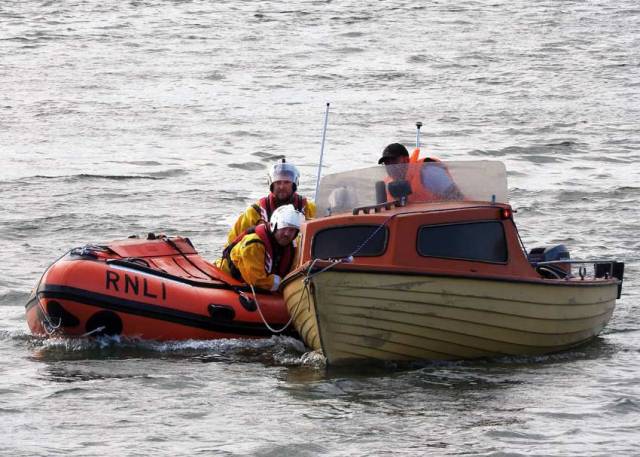#RNLI - A small angling boat with one person on board was towed to safety by Wicklow RNLI after it got into difficulty near Wicklow Head on Wednesday evening (8 August).
The angler had earlier departed from Wicklow Port for a day’s fishing along the coast, but was unable to get the engine into gear to return to the harbour.
The inshore lifeboat launched shortly after 6pm with helm Vinnie Mulvihill and crew David O’Leary and Graham Fitzgerald, and located the drifting craft near Wicklow Head eight minutes later. Weather conditions at the scene were calm with a northerly wind force three.
The angling boat was taken in tow back to Wicklow Harbour and the angler was landed safely ashore.
Elsewhere, Clifden RNLI continued what’s been a busy August when the volunteer lifeboat rescued a boy separated from his kayak at Omey Island earlier on Wednesday afternoon.
The youngster and his friend were holidaying on the island in Claddaghduff with their families, who raised the alarm when one of the boys was seen in the water with his friend trying to help him.
Following the coastguard request after 2.30pm, the Atlantic 85 lifeboat launched from Clifden while the D Class lifeboat travelled by road and was launched at Claddaghduff. Winds were Force 6 and gusting to 7 at the time.
When the Atlantic 85 reached the scene, they found people waving from the eastern shore of the island and saw that the two boys involved had made it ashore to another beach in the area, where some other visitors were assisting them.
Clifden RNLI helm Thomas Davis manoeuvred the lifeboat close to the shore and crew member James Mullen then swam to attend to the boys before reuniting them with their families. They were cold and shaken after the ordeal but otherwise unharmed.
Speaking after the callout, Mullen said: “We were really glad to have been able to assist these lads and their families today and always encourage anyone concerned to raise the alarm as quickly as possible.
“Conditions at sea in this area can change rapidly even for experienced water users and we are always on hand to help where we can.”
The RNLI advise all kayakers to always carry a means of calling for help and to keep it in reach at all times.
More recently, Carrybridge RNLI’s rescue water craft and inshore lifeboat Douglas Euan & Kay Richards, were requested to launch by Belfast Coastguard to assist a man who was disorientated whilst navigating Tamlaght Bay in Upper Lough Erne in the early hours of this morning, Friday 10 August.
And Larne RNLI’s all-weather lifeboat and inshore lifeboat crews recently carried out a training exercise to simulate a casualty care and extraction scenario.































































